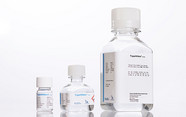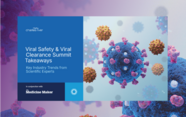Drugs to Watch in 2025: Part 2
We take a deep dive into key industry trends off the back of Clarivate’s Drugs to Watch 2025 report
Stephanie Vine | | 9 min read | Interview

Every year, Clarivate publishes a list of key drugs to watch. For 2025, eleven drugs were selected: AWIQLI (insulin icodec), CagriSema (cagrilintide + semaglutide), COBENFY (KarXT; xanomeline-trospium), EBGLYSS (lebrikizumab), Fitusiran, GSK-3536819, IMDELLTRA (tarlatamab-dlle), mRESVIA (mRNA-1345), SEL-212, Vepdegestrant (ARV-471), and Zanzalintinib (XL092).
The free-to-access report also discusses other industry trends. We spoke with Mike Ward, Global Head of Life Sciences & Healthcare Thought Leadership at Clarivate to find out more. In Part 1 of this interview, we discussed how the list of drugs was decided and how it has changed over the years. Here, we branch out into deeper industry trends.
What are the main challenges of bringing a new drug to market?
The fundamental issues in drug development have always been the same: proving that a drug is safe and effective while managing regulations, high costs, and long timelines.
Time and cost are two of the biggest hurdles. We all know the standard figures of it taking 10 to 15 years and costing around $2.5 billion to bring a new drug to market, but it’s not just about R&D costs. The patent clock starts ticking early, so companies have a limited window to generate returns before generics or biosimilars enter the market.
Then there’s the difficulty of clinical trial recruitment. Finding and retaining patients for trials is a major bottleneck. One issue is that many companies automatically go to the same high-profile principal investigators (PIs), but those PIs are often running multiple trials at once so you may never be their top priority. I often advise companies to look at up-and-coming investigators in the field rather than established PIs. If you work with someone who’s not yet running multiple trials, your study can become their top priority, which can speed up recruitment and improve trial efficiency.
How are AI and real-world data making a difference?
AI and real-world data are playing a growing role in overcoming some of the challenges. AI can accelerate drug discovery by analyzing massive datasets to identify promising drug targets and predict efficacy and toxicity. Regulators like the FDA are already using AI-powered tools, such as OFF-X, to assess potential risks in molecules. AI and real-world evidence are also improving clinical trial design by reducing the number of patients needed, increasing the likelihood of success, and helping select the most suitable participants.
Real-world evidence can help companies to make better go/no-go decisions throughout development. It can assess commercial viability, identify patient subgroups, and understand how drugs will perform outside of controlled trial settings. Take antidepressants, for example. It often takes two weeks for them to take effect. If a patient doesn’t feel improvement within a week, they may stop taking them. AI and real-world evidence can help identify these patterns earlier and refine treatment strategies.
AI and real-world data also have the potential to cut down the dead time between trial phases, which could significantly reduce development timelines and costs. We’re already seeing AI-driven drug discovery companies like Insilico Medicine demonstrate how quickly they can move from concept to phase III trials.
Even after approval, real-world data continues to play a role. Regulatory agencies often require post-market surveillance to monitor how a drug performs in the broader population. The FDA, for instance, frequently requests Risk Evaluation and Mitigation Strategies to ensure long-term safety monitoring.
Of course, there are still challenges. Data quality and standardization remain issues, and there are ethical concerns around data privacy and AI-driven decision-making. AI hallucinations – where models generate incorrect or misleading insights – are another risk that regulators are still working to address.
There’s a need for more robust regulatory frameworks to ensure AI-generated findings align with real-world clinical outcomes. However, one of the positive outcomes of the COVID-19 pandemic was that regulators became more pragmatic and open to using real-world data in their decision-making. That’s helping speed up approvals and get targeted therapies to patients faster.
With each Drugs to Watch list, we see new drugs, technologies, and innovations – whether it’s gene editing tools, mRNA, or something else. How does that make you feel about the future of healthcare, particularly in treating genetic diseases?
It’s very exciting. This year’s list includes mRESVIA, Moderna’s RSV vaccine, which is the first mRNA vaccine that isn’t targeting COVID-19. Last year, we identified the GSK and Pfizer RSV vaccines as Drugs to Watch, which were the first RSV vaccines approved for older adults. mRESVIA is different in that it uses mRNA technology, adding further momentum to the growing field of RNA-based therapies. We’ve seen a lot of progress in this space overall. In 2024, nine RNA-based products were approved; not just mRNA but also siRNA and other modalities.
Gene editing is another area that’s still in its early days but holds a lot of promise. We actually identified Casgevy – developed by Vertex and CRISPR Therapeutics – as a drug to watch in our 2024 report. At the time, we expected it to be approved in early 2024, but then the UK MHRA approved the drug in December 2023.
The potential of both RNA-based therapies and gene editing is huge, moving beyond symptom management to potentially curative treatments. However, there are challenges, particularly for gene editing, such as safety concerns, off-target effects, and efficiency. And then there is the issue of equity and access. Gene editing therapies are extraordinarily expensive. How do we ensure that cutting-edge treatments are accessible to all patient populations, including underserved communities?
We recently published a report on the gene editing space looking at companies developing solutions to some of these challenges. The goal is to make gene editing a viable, scalable treatment modality that benefits the most people possible.
On that note, the report touches on drug pricing pressures and market access challenges… what actions are being seen?
Most medicines have a finite commercial lifespan because once patents expire, there is competition from generics or biosimilars. Consider Humira – the best-selling drug for years. It lost patent protection in Europe around 2016–2017, and in the US in 2022-2023. AbbVie responded by strategically lowering prices. Since Abbvie has been manufacturing it for so long, they have a cost advantage. The R&D costs are already baked in, and clinicians are often reluctant to switch stable patients from a known biologic to a biosimilar because of concerns about immune reactions or differences in efficacy.
What we’ve seen with biologics is that, while prices drop when biosimilars enter the market, the original manufacturers often maintain market share, especially for existing patients. Biosimilars are also still fairly expensive because the production process is complex with high manufacturing costs – around 40 percent of the total cost is tied to production.
At the same time, the industry is facing rising costs. The supply chain disruptions that started with COVID-19 have made companies rethink their reliance on lower-cost manufacturing regions. Many are shortening supply chains and bringing production closer to home, which increases costs for labor, raw materials, and compliance. Passing those costs onto payers and patients isn’t always an option because of legislations and initiatives introduced by governments to control the cost of medicines. In the US, for example, there is the Inflation Reduction Act, which allows the Centers for Medicare & Medicaid Services to negotiate drug prices. The first 10 drugs selected for price negotiation were announced in 2024. Price changes will take effect in January 2026. Another 15 drugs will be added to the list in 2025, then another 15, and later 20 more. This gradual expansion is going to have a cumulative impact on drug pricing and market dynamics. We’re also seeing growing adoption of value-based pricing models, where drug prices are linked to clinical effectiveness and patient outcomes. This will be something that companies need to consider early on.
Something that is also interesting to me is the fact that biotech companies – whether they plan to commercialize their products themselves or license them out – are now expected to have a solid market access strategy. Ten or fifteen years ago, biotech companies would have left market access concerns to big pharma after out-licensing their assets. But now, when biotechs negotiate with pharma companies, they’re expected to demonstrate a clear value proposition. Pharma wants to know how the drug will be used by clinicians, what its competitive edge is, and what payers will be willing to reimburse. This shift means biotechs must think beyond just scientific innovation and clinical data. They need a commercialization mindset from the start, which also means considering cost and access strategies.
To navigate pricing and reimbursement challenges, pharma and biotech companies need to focus on cost management, strategic pricing, and ensuring their drugs offer real differentiation. We’re seeing companies tightening their belts, laying off staff, and prioritizing only the most promising assets. Doing “me-too” drugs with only marginal improvements isn’t good enough anymore. If a drug is only 15–20 percent better than existing treatments, pharma companies may deprioritize it because it might not justify the investment.
That’s where companies like Clarivate come in – helping pharma and biotech teams develop market access strategies, assess payer expectations, and determine what real-world evidence they’ll need to support regulatory and reimbursement decisions. Pricing and market access are now front and center – for both pharma and biotech. The industry must balance innovation with affordability, while adapting to an evolving regulatory and reimbursement landscape.
How accurate are the Drugs to Watch reports?
We put this report together every year by drawing from the expertise of over 160 analysts, along with 11 integrated data sets that span the R&D and commercialization lifecycle, including Cortellis Intelligence solutions, real-world data and analytics, and many others. I’ve been responsible for it for the past five years and what stands out to me is how accurate we’ve been in predicting which drugs will have a major impact.
In the 2024 report, we anticipated outcomes for 13 drugs; 12 of them did exactly what we expected. The 13th one technically made it as well. It was approved by the Japanese regulator on December 27! This was the AstraZeneca-Daiichi Sankyo product for breast cancer. Its non-small cell lung cancer indication has been slightly delayed because, while the results were promising, they weren’t statistically significant at the time. The company had to withdraw its NDA and then resubmit a new BLA. However, we fully expect that one to move forward this year.
This report is not meant to be a comprehensive list of every promising drug out there. There are plenty of other interesting candidates, but we focus on the ones where, based on the data we have, we can provide meaningful insights. The goal is to get people talking and thinking. These are our informed opinions, and we encourage engagement and discussion around them.
Over the years, I like to think we’ve done a solid job of identifying key industry trends ahead of time, whether it’s antibody-drug conjugates, gene editing, or cell and gene therapy. And the report isn’t just a one-off – throughout the year, we continue to provide analysis and support, helping industry professionals stay ahead of these developments.

Making great scientific magazines isn’t just about delivering knowledge and high quality content; it’s also about packaging these in the right words to ensure that someone is truly inspired by a topic. My passion is ensuring that our authors’ expertise is presented as a seamless and enjoyable reading experience, whether in print, in digital or on social media. I’ve spent fourteen years writing and editing features for scientific and manufacturing publications, and in making this content engaging and accessible without sacrificing its scientific integrity. There is nothing better than a magazine with great content that feels great to read.



















